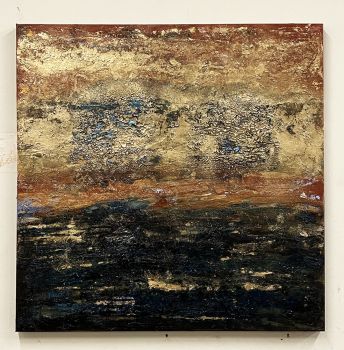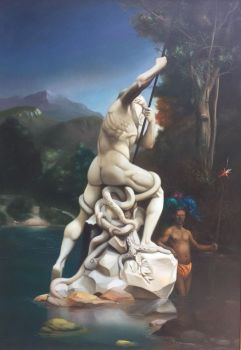A Carpenter Having Lunch 1618 - 1629
Jacob Gerritsz Cuyp
Huile sur toile originale
72.70 ⨯ 63.60 cm
ConditionExcellent
Prix sur demande
TERTIUS GALLERY
- Sur l'oeuvre d'art
The present painting was hitherto unknown to scholars.1 Its rediscovery means that a highly intriguing painting can be added to Jacob Cuyp’s known oeuvre. The theme of our painting, a carpenter enjoying his lunch-break, is highly unusual in Dutch seventeenth-century painting. The painting is not intended as a portrait but, no doubt, Cuyp did paint a real person, and it cannot be ruled out that the painter’s model actually was a carpenter. We can only speculate as to what inspired Cuyp to paint this “tronie”, which is the period and correct term for genre-like representations of real people of this kind. The subject of a carpenter is not at least out of place in the context of Dordrecht, where Cuyp lived and worked for virtually his entire life. Sitting in the Meuse-Rhine basin on the river Merwede, which connects the North Sea with the many inland waterways of the Meuse, Waal and Lek, Dordrecht developed from the late thirteenth century onwards as a leading trade and distribution centre of wood. Although its importance diminished somewhat from about 1550 onwards, for merchants coming down the Lower Rhine, Waal and Meuse, Dordrecht remained the most important port of call by far and an important node in the network of intra-regional trade in the Republic until well into the seventeenth century. Rotterdam, Zaandam and Hoorn had overtaken Dordrecht’s shipbuilding industry in the course of the seventeenth century, but the wood industry remained important for Dordrecht nonetheless. Apart from Joseph, the most famous carpenter in history who is as a rule depicted accompanying Mary and the Christ Child, the subject of a carpenter never took off in Dutch painting. This is surprising given the huge numbers of people earning a living in the wood industry in the Netherlands. Woodworkers have been given their due space, though, in Johannes and Caspar Luyken’s 100 Verbeeldingen van Ambachten. In this emblematic work the “schrynwerker”, “de Boom maker”, and “De Scheepstimmerman” were included.2 Which of these specific professions did our carpenter perform we do not know. In the background we see men sawing beams of wood. It could be a shipyard, but the artist apparently did not feel the need to specify the kind of wood-yard. Ironically, all Cuyp’s paintings of this and similar sizes are on wooden panel, but the present painting is on canvas, which is highly unusual for the artist. Cuyp portrays the carpenter in a romanticized guise, in a painterly beret and with a cloak elegantly draped over his one shoulder.
Êtes-vous intéressé par l'achat de cette oeuvre?
Artwork details
Related artworks
Unbekannter Künstler
A Surinam-themed Amsterdam long-case clock1746 - 1756
Preis auf AnfrageZebregs & Röell - Fine Art - Antiques
 Kuratiert von
Kuratiert vonGallerease Magazine
Unbekannter Künstler
Een Gotische zuidelijke Nederlanden wandklok1580 - 1590
Preis auf AnfrageNico van den Assem restauratie
Unbekannter Künstler
A Dutch colonial Indonesian betel box with gold mounts1750 - 1800
Preis auf AnfrageZebregs & Röell - Fine Art - Antiques
1 - 4 / 24Rene Rietmeyer
"Portrait of Little Sara" 20182018
Preis auf AnfrageEuropean Cultural Centre Collection
Fredericus Jacobus van Rossum du Chattel
Poldervaart in the Vecht river region1899 - 1901
Preis auf AnfrageKunsthandel Pygmalion
1 - 4 / 24- 1 - 4 / 24
- 1 - 4 / 24
- 1 - 1 / 1

































































































